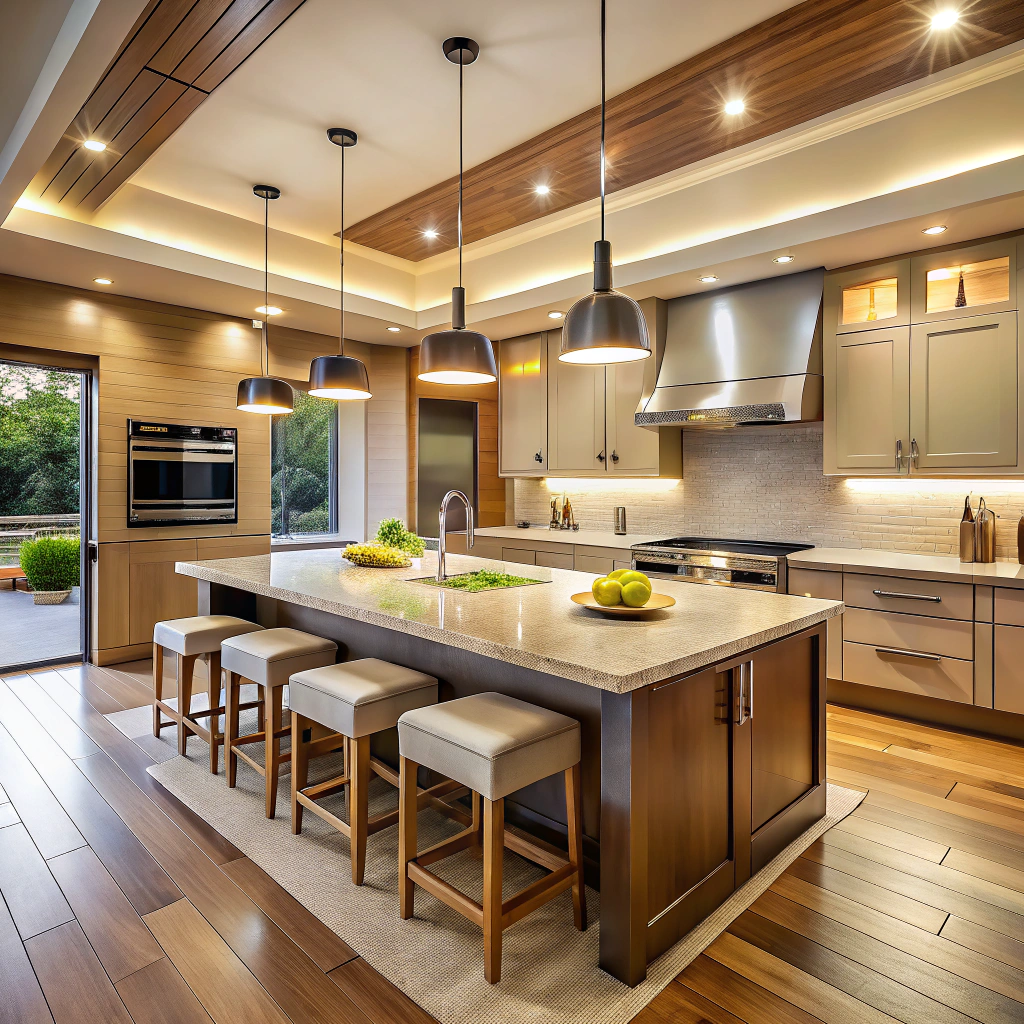Last updated on
Discover the key differences between large and small pendant lights for kitchen islands. Explore their unique benefits and design tips to enhance your space.
A kitchen island is a versatile and functional addition to any home, providing ample storage space, extra seating, and a designated area for meal prep. But when it comes to choosing the right pendant lights for your kitchen island, the options can be overwhelming.
Should you go for large statement pieces or opt for smaller, more subtle fixtures? In this article, we’ll explore the pros and cons of both large and small pendant lights for kitchen islands so you can make an informed decision that fits your style and needs. So let’s dive in!
Key takeaways:
- Large pendant lights make a statement and add drama
- Small pendant lights offer subtle lighting and versatility
- Consider kitchen island dimensions when choosing pendant light sizes
- Large pendants have pros: focal point, more light; cons: expensive, installation complexity
- Small pendants have advantages: affordability, design options; disadvantages: less light coverage, potential clutter
What's Inside
Pendant Light Sizes
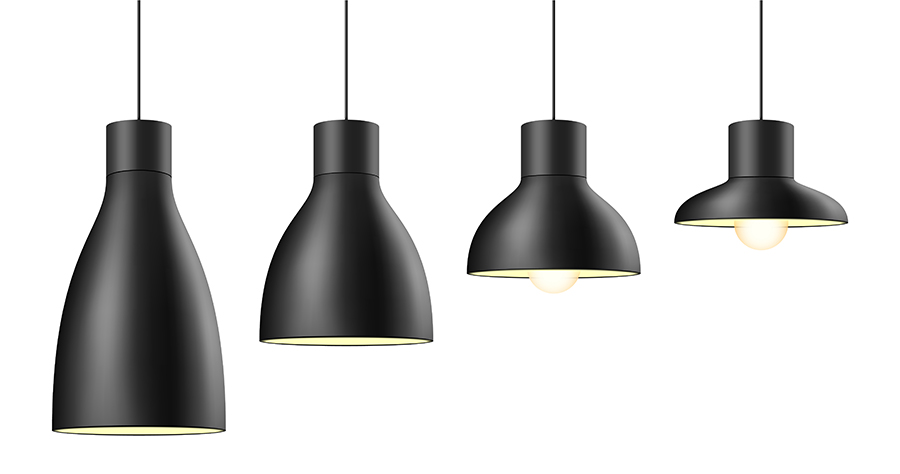
When it comes to pendant lights for kitchen islands, size matters. The size of your pendant light can have a significant impact on the overall look and feel of your space.
Large pendants are perfect for making a statement and adding drama to your kitchen island, while smaller fixtures offer more subtle lighting that blends seamlessly into the background.
Before choosing between large or small pendant lights, consider the dimensions of your kitchen island. A general rule is that larger islands require larger pendants while smaller ones need smaller fixtures.
However, this isn’t always true as other factors such as ceiling height also play an important role in determining what size will work best.
In addition to considering the physical dimensions of both your island and room when selecting a fixture’s diameter or width (which should be roughly two-thirds its length), you’ll want to think about how high above it hangs too – typically around 30 inches from countertop level but again dependent on ceiling height.
Large Pendant Pros & Cons
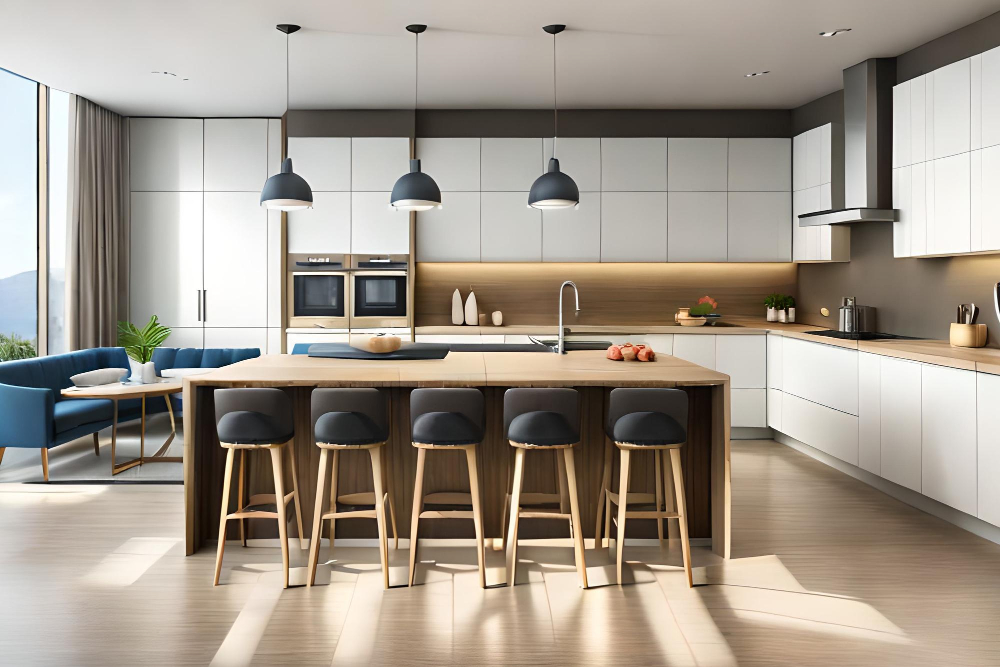
These fixtures can add drama and visual interest to your space while providing ample illumination for cooking and dining. However, there are some pros and cons to consider before committing to larger pendants.
Pros:
- Large pendant lights can serve as a focal point in your kitchen, drawing the eye upward and creating an impressive design element.
- They provide more light than smaller fixtures, making them ideal for larger kitchens or islands where multiple people will be working or eating.
- With their size comes versatility – large pendants come in a variety of styles from modern geometric shapes to traditional lanterns.
Cons:
- Large pendant lights may not work well in smaller kitchens or those with lower ceilings as they can overwhelm the space.
- They tend to be more expensive than smaller options due both their size and complexity of installation
- Large pendants require careful consideration when it comes time for installation; they need adequate support from above so that they don’t sag over time.
Small Pendant Advantages & Disadvantages
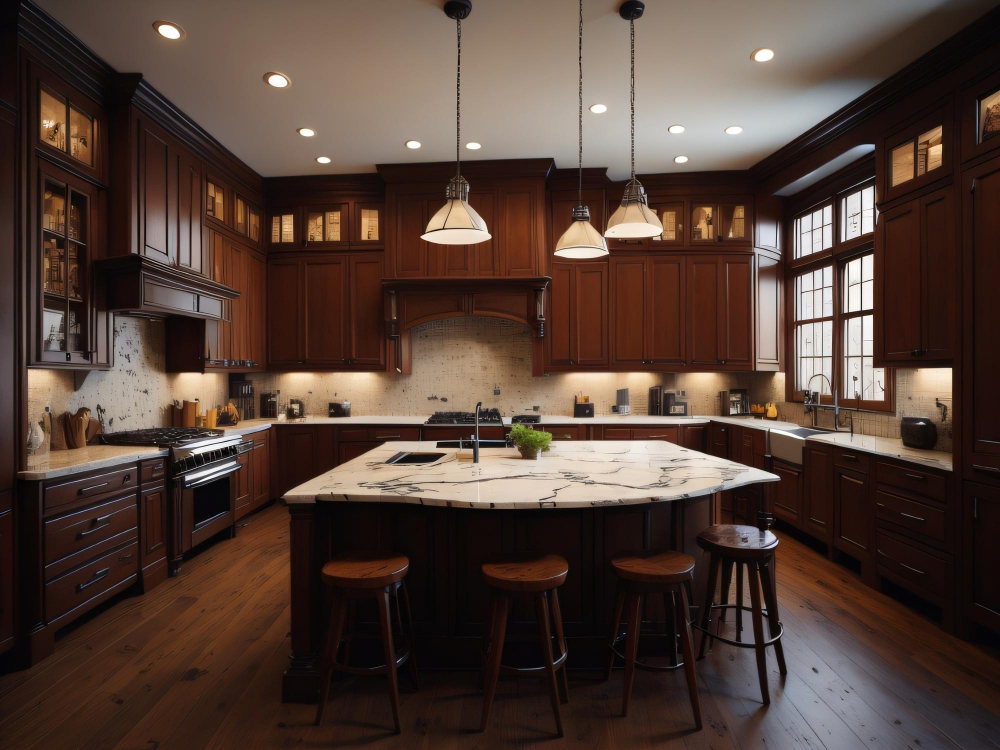
They offer several advantages that make them an attractive option for homeowners looking to add some style and functionality to their space. One of the main benefits of small pendant lights is their versatility in terms of design options.
With smaller fixtures, you can experiment with different shapes, colors, and materials without overwhelming your space or detracting from other elements in your kitchen.
Another advantage is that small pendants tend to be more affordable than larger ones while still providing ample lighting over your island workspace. This makes them a great option if you’re on a budget but still want to update the look of your kitchen.
However, there are also some disadvantages associated with choosing smaller pendant lights over larger ones. For instance, they may not provide as much light coverage as larger fixtures do which could be problematic if you have a large island or frequently use it for meal prep tasks that require bright illumination.
Installing multiple small pendants can sometimes create cluttered visual effects when viewed from certain angles which might not appeal aesthetically depending on personal preferences.
Kitchen Island Dimensions
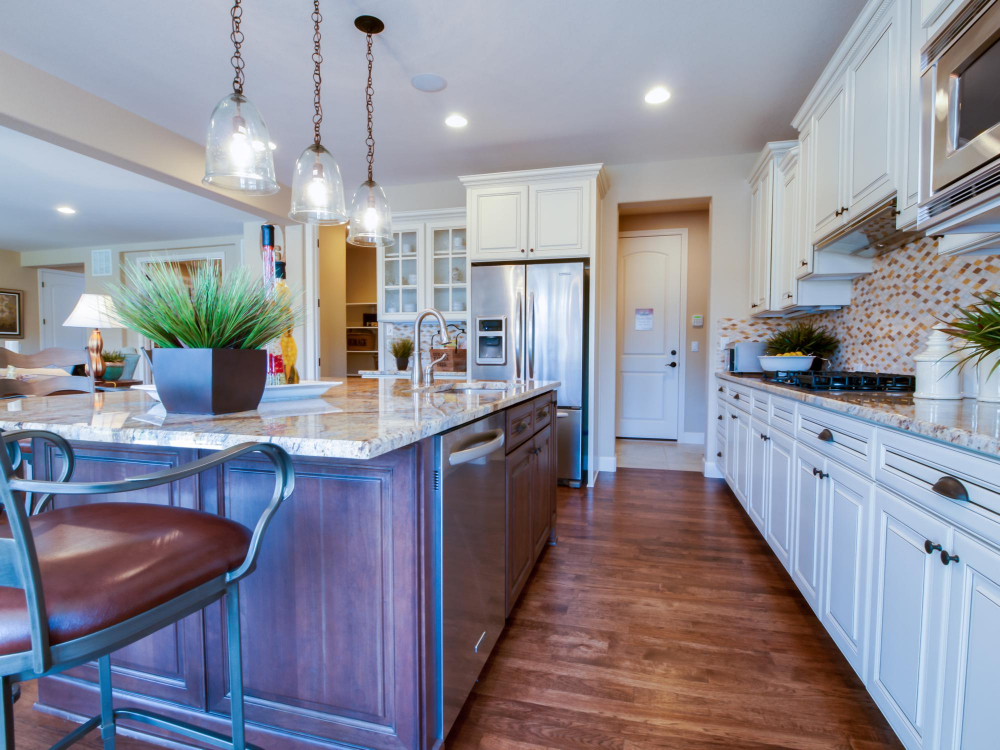
The size of your kitchen island will determine how many pendant lights you need and what sizes work best. A general rule of thumb is that a larger island requires more or larger pendants, while a smaller one can get away with fewer or smaller fixtures.
To ensure proper lighting coverage, measure the length and width of your kitchen island in inches. Then divide each number by 12 to convert them into feet.
For example, if your kitchen island measures 60 inches long by 36 inches wide, it would be approximately five feet long by three feet wide.
Once you have determined the dimensions of your kitchen island in feet, use this formula: Island Length (in Feet) x 1.5 = Pendant Light Diameter (in Inches). This calculation will give you an estimate for how large each pendant light should be based on the length of your countertop.
Lighting Design Tips
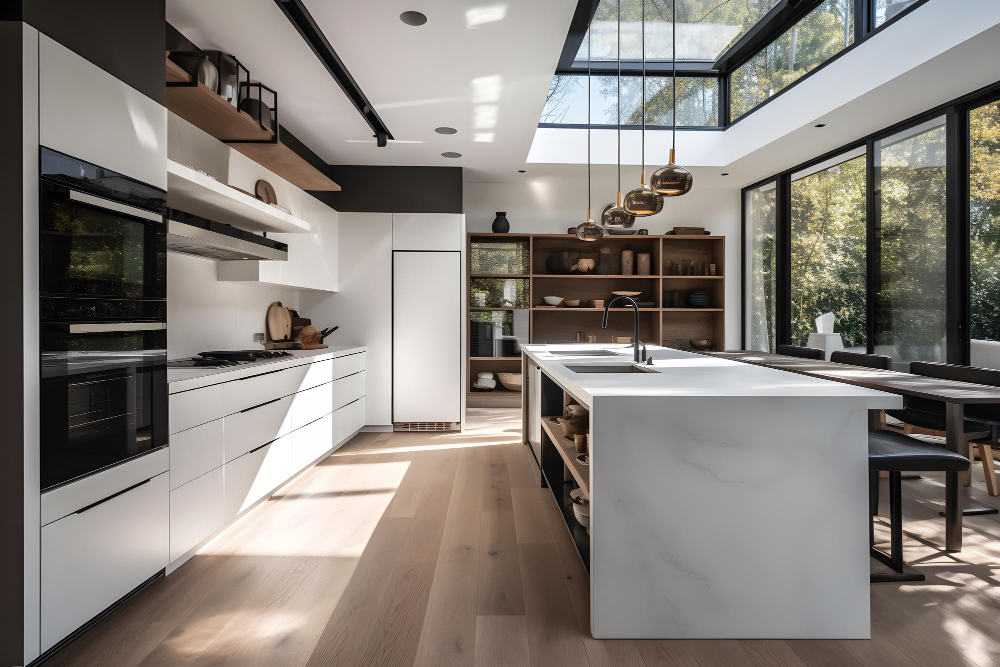
First and foremost, consider the size of your island and the height of your ceiling. If you have a larger island or higher ceilings, you may want to opt for larger pendant lights that can make a statement without overwhelming the space.
Another important factor is functionality versus aesthetics. While pendant lights can add visual interest and style to your kitchen, they also need to provide adequate task lighting for meal prep and cooking activities.
Consider using dimmer switches so you can adjust the brightness as needed.
Think about how many pendants you’ll need based on the length of your island – typically one large fixture or two smaller ones work well for most spaces.
Functionality and Aesthetics
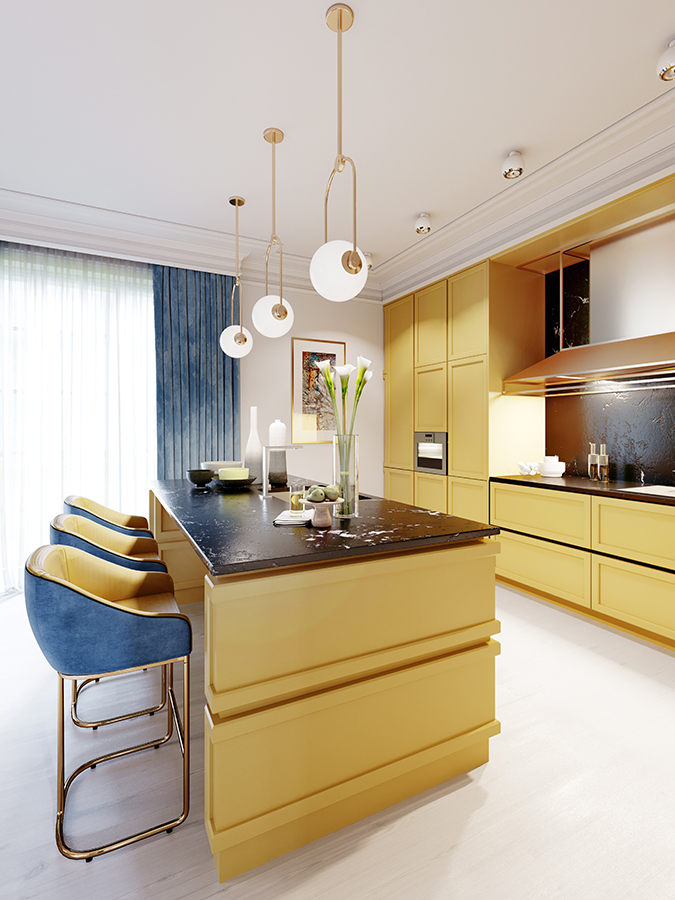
Large pendant lights can provide ample lighting for the entire space while also making a bold statement. They are perfect if you have a large kitchen island or want to create an eye-catching focal point in your space.
On the other hand, small pendant lights offer more subtle lighting that is ideal for smaller islands or when you want to highlight specific areas of your kitchen. They can be used as task lighting over workspaces such as sinks and stovetops.
Ultimately, the choice between large and small pendants will depend on how much light you need in your space and what kind of aesthetic appeal you’re going for.
Installation Considerations
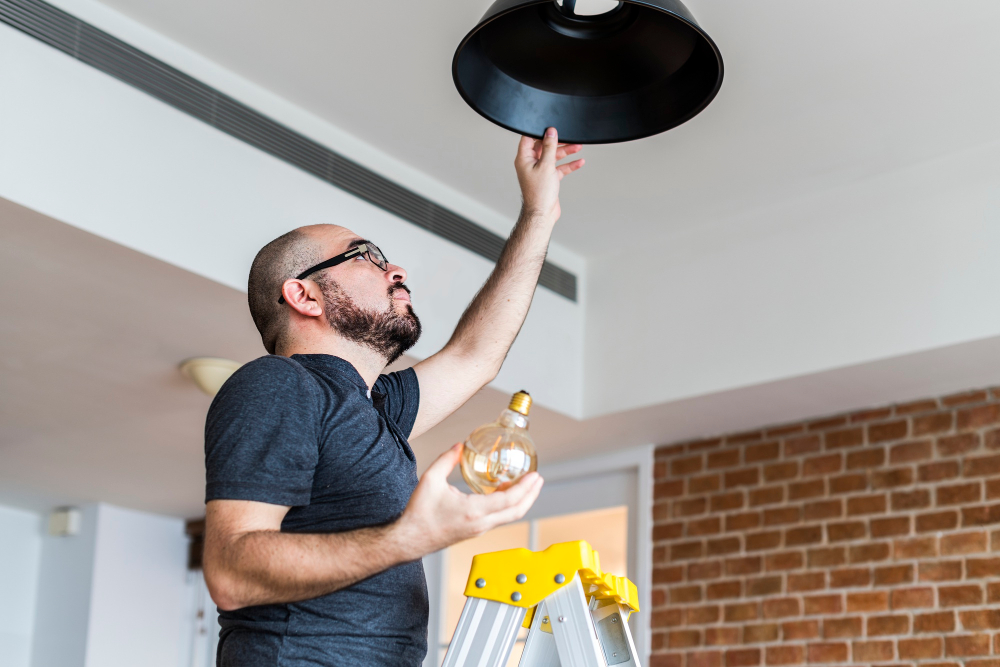
First and foremost, you’ll want to ensure that the height of your pendant lights is appropriate for the size of your island. Large pendants may require more space between them and the countertop than smaller fixtures.
You’ll need to consider how many pendants you want over your kitchen island. A general rule of thumb is one pendant light per every two feet of counter space; however, this can vary depending on personal preference and lighting needs.
Another important factor when installing pendant lights is ensuring that they are properly wired into an electrical source. If you’re not comfortable with electrical work or don’t have experience with wiring fixtures yourself, it’s best to hire a professional electrician who can safely install them for you.
By taking these installation considerations into account before purchasing and hanging your new pendant lights above your kitchen island, you can ensure both safety and functionality while enhancing the overall aesthetic appeal of this essential home feature!

